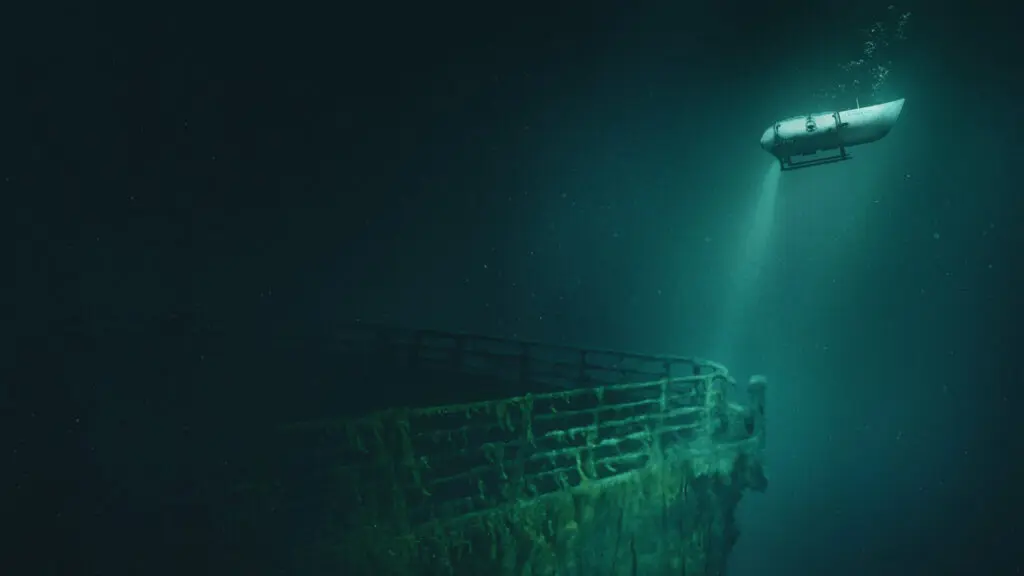
Titan: The OceanGate Disaster isn’t a whodunit, but it can nonetheless be summed up by saying, simply, that the rich guy did it. Then again, of course he did. If you give an old money narcissist enough resources and public attention, he’s – and they’re always “he’s”, aren’t they? – inevitably going to get himself killed in his own submersible for no better reason than ego. This Netflix documentary from director Mark Monroe (Harry & Meghan) doesn’t so much explain how, but spends almost two hours saying “I told you so.”
Having said all this, the film is interesting because the subject was so doomed to failure from its very conception. None of what’s unpacked here – a string of logistical and engineering failures and compounding terrible ideas, all impossible to address thanks to the obstinacy of the guy in charge – is remotely surprising. But the underpinning urge to carry out a rich-folks-only sightseeing tour of the Titanic’s wreckage in a manned submersible that was virtually guaranteed to implode and kill everyone is fascinating in its hubris. The reason the disaster was such a viral sensation in the first place was because of the implicit schadenfreude. The rich were at it again.
This all gives Titan: The OceanGate Disaster an odd quality. It’s much less sympathetic and more overtly accusatory than many documentaries about disasters, with everyone from journalist Mark Harris to several former OceanGate employees who worked on the project uniformly pointing the finger of blame at CEO Stockton Rush, despite him having died in the submersible and no longer being around to defend himself. But there’s no conflicting feeling here since he was so obviously deplorable, and the whole thing is so obviously his fault.

As it turns out, though, making this obvious point repeatedly for almost two hours does not a good documentary make. The behind-the-scenes testing footage interspersed with testimony from the experts and employees who knew the whole thing was doomed constantly reiterates what we already know – that the submersible’s carbon fibre hull could not withstand the pressure of the descent, that everyone knew this to be the case and carried on with the expedition anyway, and that it all happened for no better reason than financial willy-waving.
Some of the film’s construction is smart, though. I like how the testing footage is deliberately juxtaposed with recorded testimony from subsequent public hearings, giving a nice before-and-after quality to the submersible’s creation. Hearing various key personnel flagging problems that would subsequently be ignored and then testifying to the effect that they flagged a problem and it was ignored does sound like something close to parody when written down – I’m reminded of that hilarious and eternally relevant “the front fell off” skit – but it’s really quite a telling reminder of how much raw power the super-wealthy wield. Even with lives and millions of dollars at stake, nobody had the authority to tell Rush “no”. And it killed him. But it also killed several others, including Titanic expert Paul-Henri Nargeolet, billionaires Hamish Harding and Shahzada Dawood, and Dawood’s son Suleman.
The science and engineering around deep-sea exploration are pretty complex, but it doesn’t require any expertise to realize what happened here. After a brief primer on carbon fibre, an acoustic monitoring system designed to pick up the snaps and crackles of the hull’s deterioration does all the dramatic heavy lifting in graph form. The point is proved capably enough. But this is perhaps the least interesting part of the story, and it remains the almost sole focus throughout the runtime. There’s a curious refusal to really analyse how the story of corporate malfeasance intersected with a class-conscious culture that was, in many ways, eager for something bad to happen to everyone on board. Unpacking that is, I suspect, a much trickier proposition than just reminding everyone whose fault it was. But it would have undeniably made for a more interesting film.


